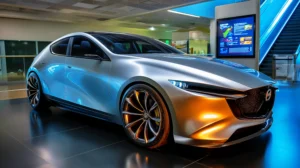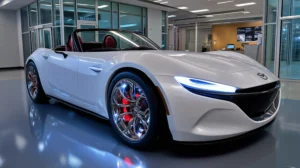2026 Mazda MX-5 RF
For decades, the Miata has been the definitive affordable sports car, the benchmark for handling balance, driver connection, and top-down smiles.
As we look towards the horizon, anticipation is building for what the next-generation Miata, potentially arriving for the 2026 or 2027 model year, will bring, especially in its gorgeous Retractable Fastback (RF) form.
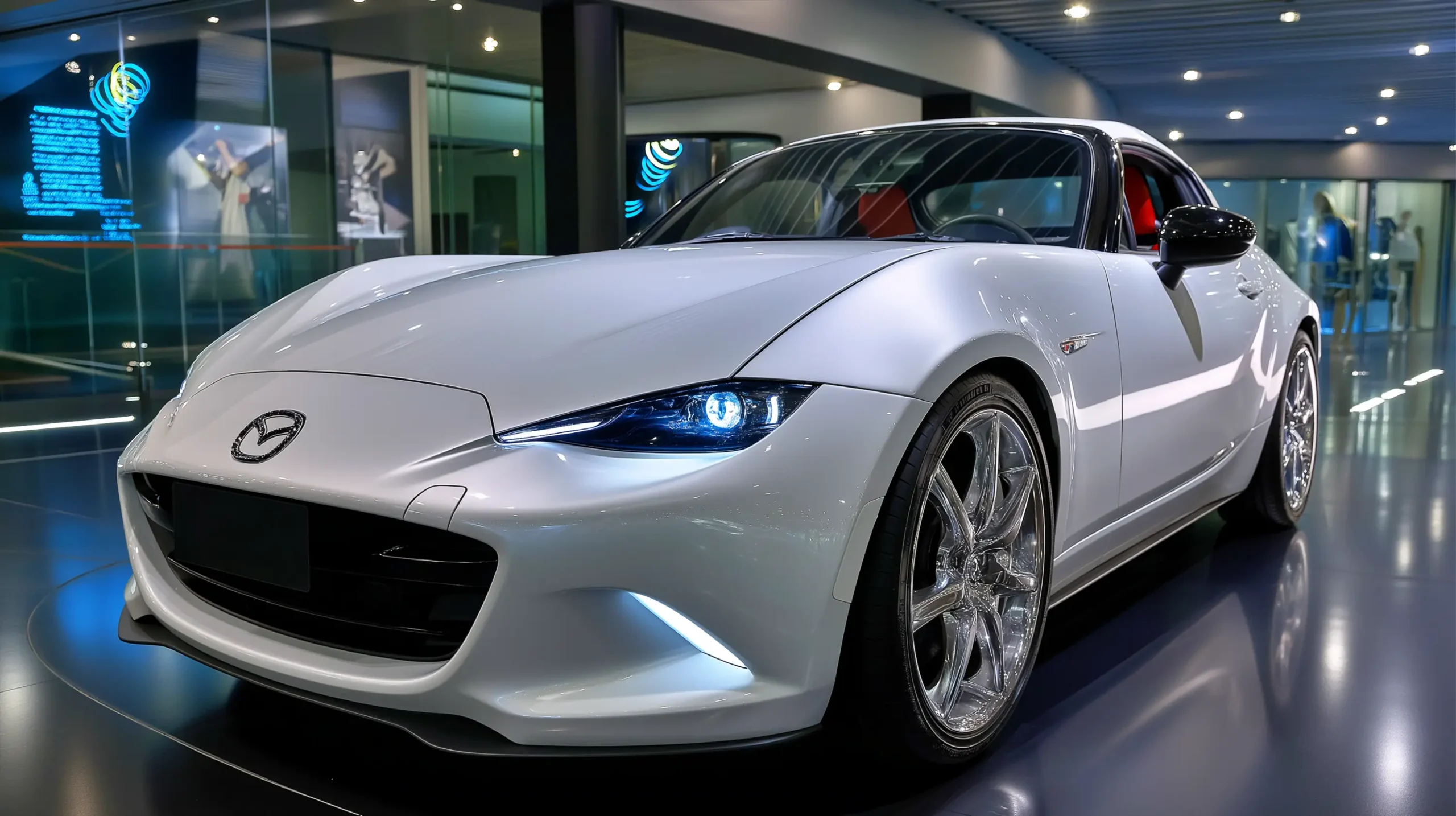
While Mazda keeps its cards close to the vest, whispers and informed speculation paint a picture of evolution, not revolution – refining the magic that makes the MX-5 an icon, particularly for US drivers who cherish open-road freedom.
This isn’t just another convertible; it’s a lightweight testament to Jinba Ittai – the feeling of oneness between car and driver.
Let’s dive into what we expect from the 2026 Mazda MX-5 RF, blending rumors, official hints, and Mazda’s unwavering philosophy.
The Heart of the Matter: Powertrain Purity with a Modern Twist?
Perhaps the biggest question surrounds the engine. Fear not, purists! Mazda executives have repeatedly stressed their commitment to keeping the next Miata lightweight, naturally aspirated, and crucially available with a slick-shifting manual transmission.
That’s the core DNA, the secret sauce. Forget turbo lag or the detached feel of some modern powertrains; the Miata aims to remain engaging and responsive.
However, meeting ever-stricter emissions standards (like California’s LEV IV and Europe’s Euro 7) requires innovation.
Reports from reputable sources like Road & Track and Car and Driver suggest that the next-generation Miata might grow engine displacement.
Instead of the current, brilliant 2.0-liter Skyactiv-G four-cylinder, we could see a new 2.5-liter unit, possibly utilizing Mazda’s next-gen Skyactiv-Z technology.
This tech, potentially incorporating advanced combustion techniques, aims for efficiency without sacrificing the joy of revving out an engine.
Why bigger? Paradoxically, to maintain performance. Running cleaner often means running leaner, which can sap power.
Bumping displacement could allow Mazda to meet targets while keeping the horsepower figure (currently 181 hp in the ND generation) satisfying, preserving that essential power-to-weight ratio.
Don’t expect a massive power jump; Mazda emphasizes that the current balance is near-perfect for Jinba Ittai.
Furthermore, expect some form of electrification, likely a 48-volt mild-hybrid system. This wouldn’t make it a hybrid in the traditional sense but would assist with efficiency, smooth out start-stop operation, and potentially provide a subtle torque boost – all while adding minimal weight, a key Mazda obsession.
For now, a full battery-electric Miata seems unlikely, as preserving the car’s legendary agility is paramount.
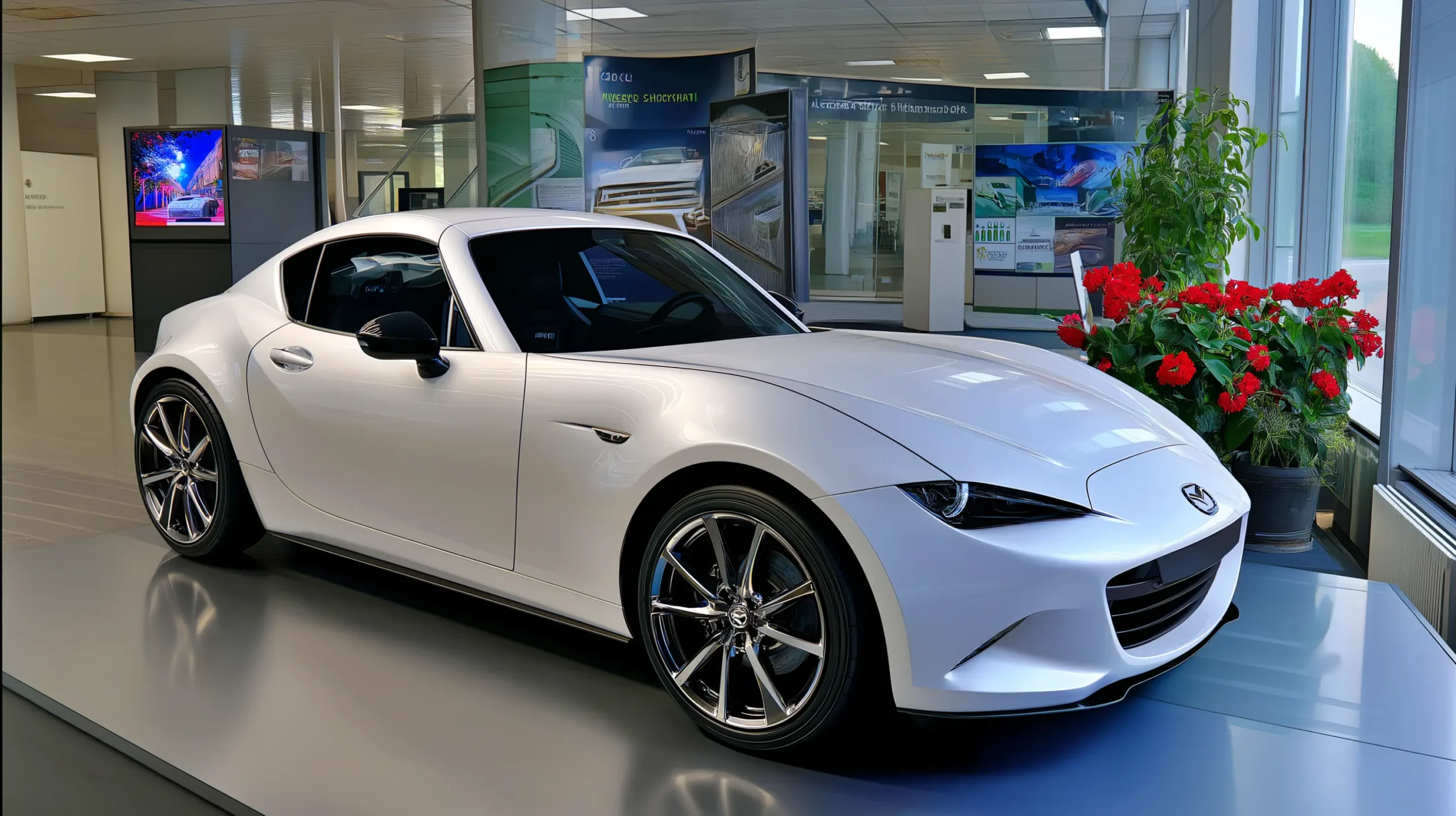
Sharpened Looks: Kodo Design Evolves
The current ND generation MX-5 is a masterpiece of Kodo design, Mazda’s “Soul of Motion“ philosophy. It’s compact, muscular, and beautifully proportioned.
The next-generation Miata is expected to refine this, potentially drawing inspiration from Mazda’s stunning Vision Study Model or the Iconic SP concept shown previously.
Expect an evolution: sharper lines, perhaps more expressive lighting signatures (building on the ND3 update’s LEDs), slightly larger wheels filling the arches, and an overall sense of lean athleticism.
The defining feature of the 2026 Mazda MX-5 RF remains its ingenious retractable fastback roof.
This complex yet elegant system offers the best of both worlds: security and a coupe-like profile with the roof up and near-open-air exhilaration (with unique flying buttresses) when retracted.
We expect this system to carry over, possibly refined for smoother, quieter operation. Mazda understands the RF’s specific appeal—it adds a layer of sophistication and all-weather usability that broadens the Miata’s reach.
Weight Watching: The Lightweight Obsession Continues
Talk to any Mazda engineer about the MX-5, and “lightweight” will appear repeatedly. It’s fundamental.
Despite adding modern technology, safety features, and potentially mild-hybrid components, Mazda reportedly targets a weight under the current car’s already feathery figure (around 2450 lbs for the current RF). The ambitious goal is under 1000 kg (2205 lbs).
How? Through obsessive engineering, advanced materials, and ensuring every component serves its purpose efficiently.
This dedication to lightness is why the Miata dances through corners gracefully and communicates so clearly with the driver.
It’s the bedrock of its exceptional handling and driving dynamics. The 2026 Mazda MX-5 RF will continue this tradition, offering feedback and agility that few cars at any price can match.
Inside Story: An Upgraded Cabin Experience
While the current Miata’s interior is driver-focused and functional, it’s an area ripe for an upgrade, especially as Mazda pushes slightly more upmarket. Expect the next-generation Miata RF to feature:
- Richer Materials: Higher quality plastics, potentially more soft-touch surfaces, and refined trim options.
- Improved Technology: This is a key area. Look for a larger, faster Mazda Connect infotainment screen (the current 7-inch unit feels dated), potentially incorporating wireless Apple CarPlay and Android Auto. A customizable digital instrument cluster, replacing the current analog dials, is also a strong possibility.
- Enhanced Comfort & Convenience: Features like heated seats and automatic climate control will continue, perhaps with improved ergonomics and slightly more occupant space. However, it will remain a snug two-seater roadster.
- Advanced Safety: Mazda’s i-Activsense suite will likely expand, incorporating more sophisticated driver-assistance features and building on the adaptive cruise control added in recent updates.
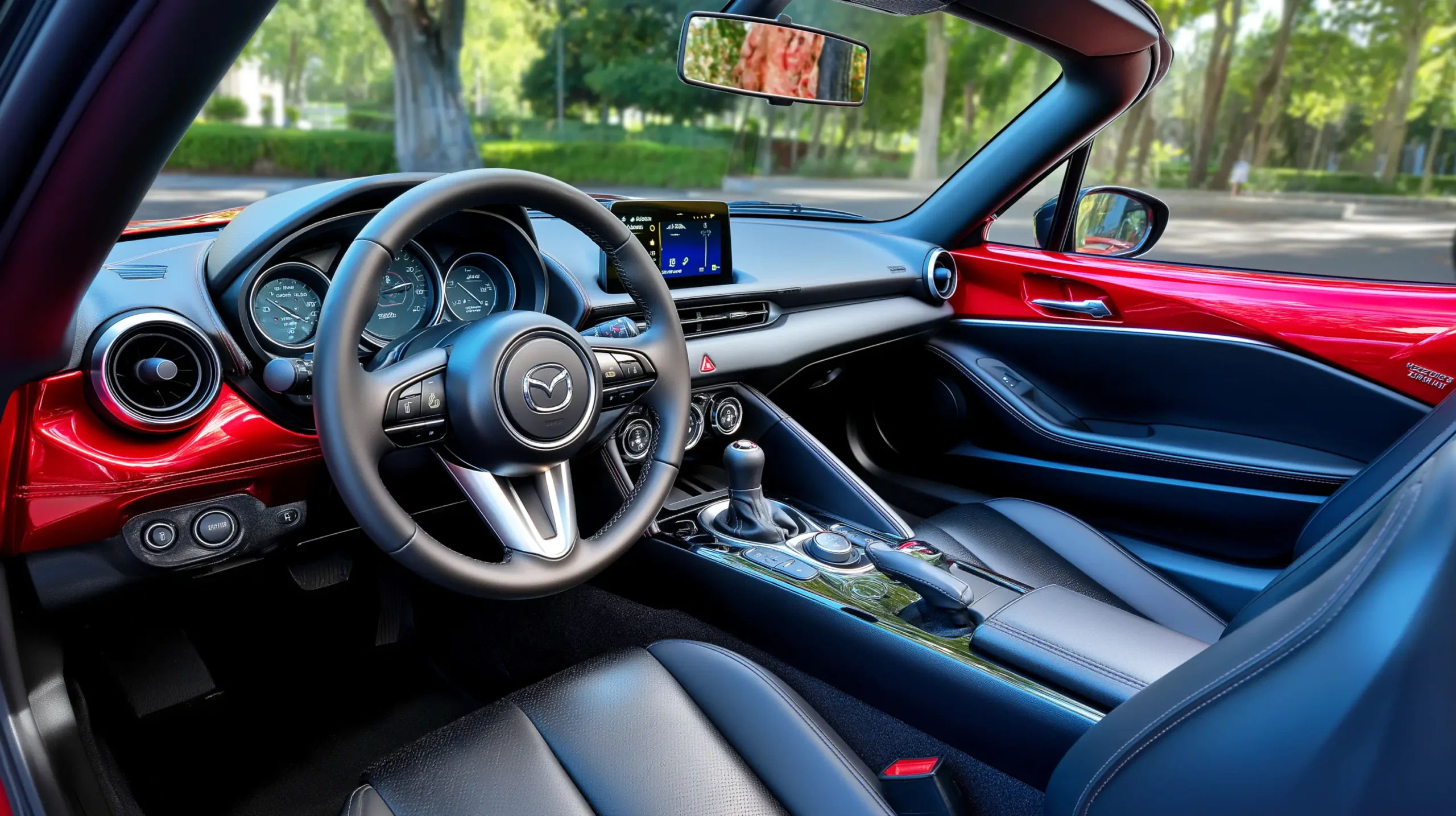
Release Date and Pricing: The Waiting Game
This is where speculation reigns. While some sources like Edmunds tentatively list a late 2025 release date for a 2026 Mazda MX-5 (potentially the updated ND3), many industry watchers and reports based on executive comments point towards the all-new NE generation debuting for the 2027 or 2028 model year, with a possible announcement in 2026.
Pricing for the next-generation Miata RF will likely increase slightly over the current model (which starts around $37,000-$41,000 for the 2025 RF trims).
Factoring in the new technology, potential engine changes, and general market trends, expect the 2026/2027 Mazda MX-5 RF price to start somewhere in the high-$30k to low-$40k range, climbing into the mid-$40k bracket for higher trims.
Even with a price bump, it should remain a relative bargain in the sports car world, offering unparalleled fun-per-dollar.
The 2026 Mazda MX-5 RF (or perhaps the 2027, depending on launch timing) represents the next chapter for a true automotive legend.
By staying true to its core principles of lightness, driver engagement, and natural aspiration, offering a manual transmission, integrating modern technology, refined Kodo design, and potentially enhanced Skyactiv engine efficiency with mild-hybrid tech, Mazda is poised to deliver another winner.
The anticipation is palpable. Whether it arrives as a final flourish of the brilliant ND generation or the dawn of the NE, the next MX-5 RF promises to be an exceptional sports car – a stylish, engaging, and attainable machine built for those who love to drive. Keep your eyes peeled; the future of the roadster looks bright, and it wears a Mazda badge.


